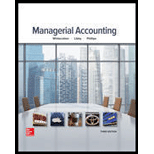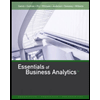
Concept explainers
(a)
Introduction:
Payback period is the time period required to cover the cost of an investment or it is the duration of time needed to recover the initial cost of an investment.
To compute:
The payback period of the given investments and rank them in order of their payback period.
Answer to Problem 12E
Payback period (project X) = 1.6 years (Rank 1)
Payback period (Project Y) = 2 years (Rank 3)
Payback period (Project Z) = 1.9 years (Rank 2)
Explanation of Solution
To calculate the payback period:
Formula used:
(b)
Introduction:
To compute:
The net present value of the given investments and rank them in order of their Net present value.
Answer to Problem 12E
Net present value (Project X) = $5,000 (Rank 3)
Net present value (Project Y) = $13,000 (Rank 2)
Net present value (Project Z) = $20,000 (Rank 1)
Explanation of Solution
To calculate NPV:
Formula used:
Net present value = PV of cash inflows − Initial investment
Net present value (Project X) = $45,000 - $40,000
= $5,000
Net present value (Project Y) = $33,000 - $20,000
= $13,000
Net present value (Project Z) = $70,000 - $50,000
= $20,000
(c)
Introduction:
Profitability index is the ratio of the benefits of a project to its costs. There is a directly proportional relationship between profitability index and the attractiveness of a project.
To compute:
The Profitability index of the given investments and rank them in order of their Net present value.
Answer to Problem 12E
Profitability Index
- Project X = 1.12 (Rank 3)
- Project Y = 1.65 (Rank 1)
- Project Z = 1.40 (Rank 2)
Explanation of Solution
Formula used to calculate profitability index:
| Projects | Profitability index |
| Project X | |
| Project Y | |
| Project Z |
(d)
Introduction:
Profitability index is the ratio of the benefits of a project to its costs. There is a directly proportional relationship between profitability index and the attractiveness of a project.
To state:
In case of limited availability of funds, which investment should be opted by the manager.
Answer to Problem 12E
As per the profitability index, investment in project Y should be opted by the manager.
Explanation of Solution
In case of limited availability of funds, it will be better for the company to prioritize the projects depending upon their profitability index. The profitability index will make the comparison a lot easier as it is expressed as a ratio and not as the dollar value.
Want to see more full solutions like this?
Chapter 11 Solutions
Managerial Accounting
- Hello tutor please given General accounting question answer do fast and properly explain all answerarrow_forwardPlease explain the solution to this financial accounting problem with accurate explanations.arrow_forwardI need help with this financial accounting question using standard accounting techniques.arrow_forward
- Pinnacle Corp. reports sales of $15 million for Year 2, with a gross profit margin of 35%. 25% of Pinnacle's sales are on credit. Item Year I Accounts Receivable $200,000 Year 2 $250,000 $1,200,000 $1,500,000 $1,000,000 $1,100,000 Inventory Accounts Payable What is the accounts payable days outstanding at the end of Year 2 for Pinnacle Corp.?arrow_forwardI am searching for the correct answer to this financial accounting problem with proper accounting rules.arrow_forwardCan you help me solve this financial accounting question using valid financial accounting techniques?arrow_forward
 Essentials of Business Analytics (MindTap Course ...StatisticsISBN:9781305627734Author:Jeffrey D. Camm, James J. Cochran, Michael J. Fry, Jeffrey W. Ohlmann, David R. AndersonPublisher:Cengage Learning
Essentials of Business Analytics (MindTap Course ...StatisticsISBN:9781305627734Author:Jeffrey D. Camm, James J. Cochran, Michael J. Fry, Jeffrey W. Ohlmann, David R. AndersonPublisher:Cengage Learning Intermediate Financial Management (MindTap Course...FinanceISBN:9781337395083Author:Eugene F. Brigham, Phillip R. DavesPublisher:Cengage Learning
Intermediate Financial Management (MindTap Course...FinanceISBN:9781337395083Author:Eugene F. Brigham, Phillip R. DavesPublisher:Cengage Learning

